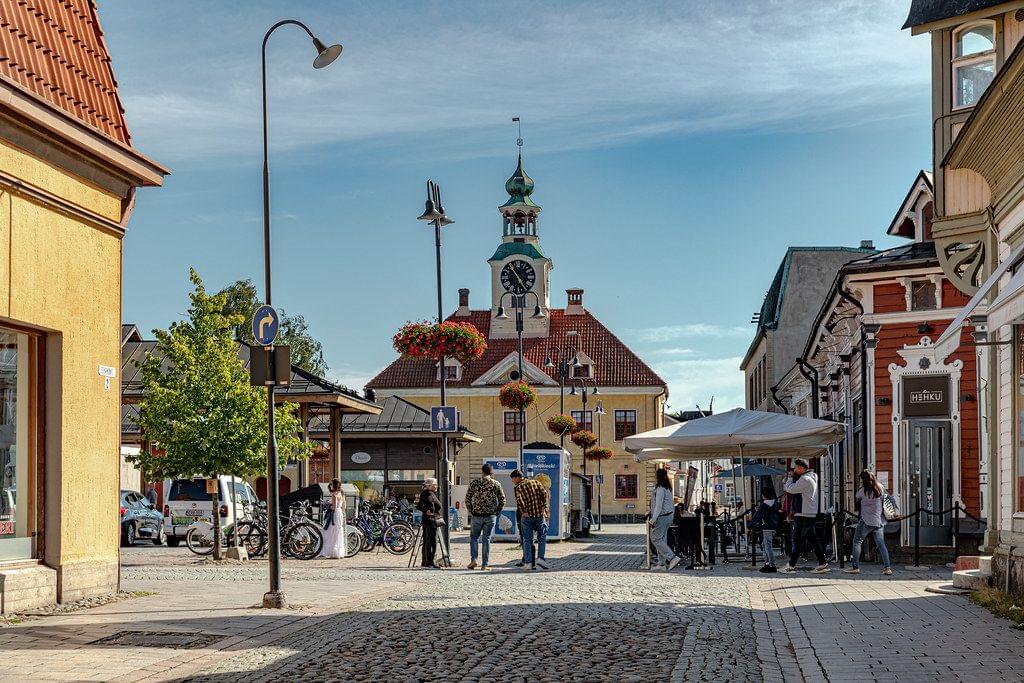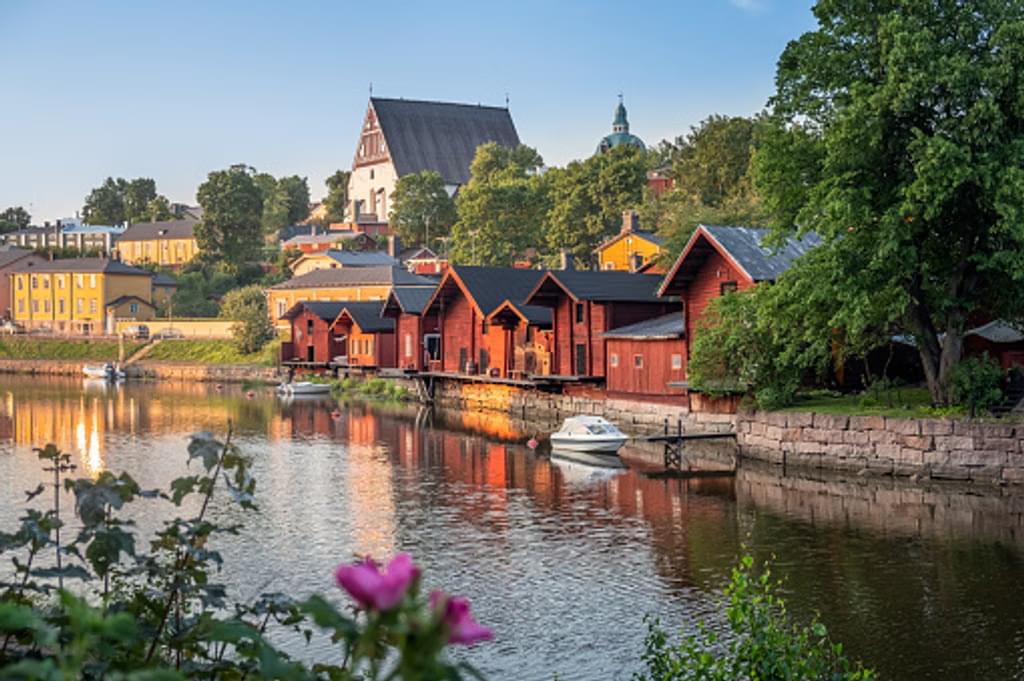
Best Time to Visit Finland: Complete Seasonal Travel Guide for Every Traveller

Finland offers unique experiences in every season, from the Northern Lights in winter to the midnight sun in summer. The country’s landscape transforms dramatically throughout the year, making the best time to visit Finland entirely dependent on what you want to experience. Winter (December–March) is ideal for husky safaris, igloo stays, and aurora hunting, while summer (June–August) brings 24-hour daylight, lake adventures, and outdoor festivals. Autumn (September–October) showcases vibrant fall colours and fewer crowds, and spring (April–May) offers milder weather and lower travel costs. This Finland travel guide helps you plan your trip by season, activity, and budget for the most rewarding Nordic adventure.
Key Takeaways
Best overall time: June to August offers 15°C–25°C temperatures, the midnight sun phenomenon in Lapland, and optimal hiking conditions across national parks.
Budget savings: April–May and September–October 2025 provide 25–45% lower accommodation costs (Rs. 6,500–12,000 per night vs. Rs. 12,000–20,000 in peak summer) with pleasant weather.
Winter magic: December–February delivers Northern Lights viewing (70–80% success rate in Lapland), world-class skiing, and authentic Finnish sauna culture.
Northern Lights season: September–March offers prime aurora viewing, with December–February providing the highest success rates and longest nights.
Indian traveller costs: Complete 10-day Finland trips range from Rs. 2,50,000 (budget) to Rs. 7,50,000 (luxury) per person, including flights from major Indian cities.
Finland Weather by Season

Finland experiences dramatic seasonal variations due to its northern location. Understanding Finland's weather by season patterns will help you select the ideal time for your Nordic adventure.
Finland in Summer
Summer is the most popular season to visit Finland. The country experiences extraordinarily long daylight hours, with the sun never fully setting in Lapland during June and July. This phenomenon creates magical white nights perfect for outdoor exploration and cultural festivities.
Weather Characteristics:
- Temperature range: 15–25°C (southern Finland), 10–20°C (Lapland)
- Daylight: 18–24 hours in northern regions, 18–20 hours in southern Finland
- Rainfall: Moderate, with occasional summer showers
- Humidity: Comfortable levels throughout
Ideal For: Hiking in national parks, midnight sun experiences, lake activities, cycling routes, and outdoor festivals
Regional Highlights:
- Lapland: Midnight sun phenomenon, fell hiking, river rafting
- Lake District: Cottage stays, swimming, kayaking, fishing
- Helsinki & South: City festivals, archipelago cruises, beach activities
- West Coast: Island hopping, Kvarken Archipelago UNESCO site
Finland in Autumn

Autumn in Finland showcases the spectacular ruska phenomenon, when forests explode into brilliant shades of red, orange, yellow and gold. This brief but stunning season offers excellent photography opportunities and marks the beginning of the Northern Lights season. The crisp air and fewer crowds make autumn the best time to visit Finland for nature photographers and budget-conscious travellers.
Weather Characteristics:
- Temperature range: 5–15°C (September), 0–8°C (October)
- Daylight: Rapidly decreasing from 15 hours to 8 hours
- Rainfall: Moderate to high, especially in coastal areas
- Humidity: Higher levels as temperatures drop
Ideal For: Landscape photography, aurora hunting, foraging for mushrooms and berries, hiking, and cultural experiences without summer crowds
Regional Highlights:
- Lapland: Ruska season peaks in September, with early aurora sightings
- National Parks: Urho Kekkonen, Pallas-Yllästunturi show stunning fall colours
- Lake District: Reflection photography on calm autumn lakes
- Helsinki: Harvest festivals, comfortable city exploration
Finland in Winter

Winter transforms Finland into an Arctic wonderland, offering some of the world's most unique experiences. This season is the best time to visit Finland for Northern Lights, with Lapland offering 70–80% success rates. The country becomes a playground for winter sports enthusiasts, with world-class skiing facilities, frozen lake activities and magical snow-covered landscapes.
Weather Characteristics:
- Temperature range: -5°C to -30°C (varying by region and month)
- Daylight: 3–6 hours in Lapland, 6–8 hours in southern Finland (December–January)
- Snowfall: Heavy and consistent from November through April in Lapland
- Humidity: Low due to cold temperatures
Ideal For: Northern Lights viewing, skiing and snowboarding, husky sledging, reindeer safaris, ice fishing, snowmobiling, and authentic sauna experiences
Regional Highlights:
- Lapland: Prime aurora viewing, Santa Claus Village, glass igloos, winter activities
- Helsinki: Christmas markets, design district shopping, urban winter culture
- Lake District: Ice fishing, snow castle hotels, cross-country skiing
- Åland Islands: Peaceful winter retreats, ice roads between islands
Finland in Spring

Spring in Finland represents the transition from winter's grip to summer's abundance. This shoulder season offers excellent value with rapidly increasing daylight hours and awakening nature. The season provides unique experiences like witnessing ice breakup on lakes and participating in Easter traditions while enjoying fewer tourists and lower prices.
Weather Characteristics:
- Temperature range: 0–15°C (gradually warming through the season)
- Daylight: Rapidly increasing from 10 to 18 hours
- Rainfall: Moderate with melting snow
- Humidity: Variable as temperatures fluctuate
Ideal For: Budget travellers, experiencing local life, spring skiing (March–April), witnessing nature's awakening, and avoiding tourist crowds
Regional Highlights:
- Lapland: Late-season skiing, longer daylight for winter activities
- Helsinki: May Day (Vappu) celebrations, opening of outdoor cafes
- Lake District: Ice breakup phenomena, early spring hiking
- Throughout Finland: Birch sap tapping, Easter traditions
When to Visit Finland Based on Your Travel Type and Preferences
| Travel Style | Best Months | Key Features | Recommended Activities |
| Budget Travellers | April–May, Sept–Oct | 25–45% lower accommodation costs | Museums, city exploration, nature walks, and local experiences |
| Northern Lights Hunters | December–February | Peak aurora activity, darkest nights | Aurora tours, glass igloo stays, winter photography |
| Nature & Outdoor Enthusiasts | June–August | Midnight sun, optimal hiking weather | National parks, lake activities, cycling, camping |
| Winter Sports Lovers | December–March | Prime ski conditions, snow guarantee | Skiing, snowboarding, cross-country skiing, snowmobiling |
| Culture & Festival Seekers | June–August | Major festivals and events | Music festivals, cultural events, and city celebrations |
| Photography Enthusiasts | September, January–February | Ruska colours, winter landscapes, aurora | Landscape photography, Northern Lights shots, winter scenery |
| Luxury Travellers | July–August, December | Peak service availability, unique experiences | Glass igloos, luxury lodges, private aurora tours, gourmet dining |
| Family Travellers | June–August, December | School holidays, family-friendly activities | Theme parks, Santa visits, summer cottages, adventure parks |
Finland Festivals and Events

Lapland (Northern Finland)
- Best Time: December–March (Northern Lights, winter activities), June–July (midnight sun)
- Highlights: Rovaniemi, Levi, Saariselkä, Ylläs, Inari
- Winter (Dec–Mar): Peak aurora viewing, skiing, husky sledging, Santa Claus Village, glass igloos
- Summer (Jun–Aug): Midnight sun, hiking, fishing, river activities, Sami culture experiences
Lake District (Central Finland)
- Best Time: June–August (lakeside cottage experience), September (autumn colours)
- Highlights: Savonlinna, Kuopio, Jyväskylä, Mikkeli
- Summer (Jun–Aug): Swimming, sauna, kayaking, fishing, cottage rentals, opera festival
- Autumn (Sep–Oct): Peaceful lakeside walks, photography, affordable accommodation
Helsinki & Southern Finland
- Best Time: May–September (city festivals, comfortable weather)
- Highlights: Helsinki, Turku, Porvoo, Tampere, Archipelago
- Summer (Jun–Aug): Festivals, archipelago cruises, outdoor cafes, design district shopping
- Spring/Autumn (Apr–May, Sep–Oct): Museum visits, design events, budget-friendly city exploration
West Coast & Åland Islands
- Best Time: June–August (island hopping, coastal activities)
- Highlights: Vaasa, Oulu, Åland archipelago
- Summer (Jun–Aug): Ferry connections, cycling routes, coastal nature, UNESCO sites
Find Your Ideal Time to Visit Finland
Finland rewards travellers in every season with dramatically different experiences. The best time to visit Finland depends entirely on your priorities: whether you're chasing the Northern Lights across Arctic skies, basking in midnight sun by pristine lakes, or immersing yourself in authentic Finnish sauna culture. Summer offers endless daylight and vibrant festivals, while winter brings the magical aurora borealis and snow adventures. Shoulder seasons provide excellent value with fewer crowds and transitional natural beauty. Plan your dream Finland tour package and experience the Nordic magic that makes this Scandinavian gem unforgettable.
FAQs About Finland Travel for Indian Travellers
1. What is the cheapest time to visit Finland from India?
Late April–May and September–October are the most affordable months, offering 25–45% savings on hotels and cheaper flights. Expect mild weather (5°C–15°C) and fewer crowds. A 10-day trip costs around ₹2.5–3.2 lakh per person, compared to ₹4–5.5 lakh in peak seasons. November is the lowest-cost month, but it has very short daylight hours.
2. When is the best time to see the Northern Lights in Finland?
The aurora season lasts from late August to early April, with peak visibility between December and February. Lapland destinations like Inari, Saariselkä, and Kilpisjärvi offer the highest success rates. For milder weather and balanced daylight, visit in September or March. Book glass igloos or aurora tours 6–9 months in advance.
3. Is Finland safe for solo female travellers from India?
Yes. Finland ranks among the safest countries globally, with low crime, reliable public transport, and friendly locals. English is widely spoken, and solo female travel is common. Follow basic precautions and prepare for cold winters, but safety concerns are minimal.
4. How many days are enough to explore Finland?
Plan 10–14 days to see major regions like Helsinki, Lapland, and the Lake District. A 7-day trip covers either Lapland or southern Finland, while 10 days lets you combine both. Allocate at least 3–4 days in Lapland for Northern Lights and Arctic adventures.
5. Do Indians need winter clothing for Finland summer travel?
No thermal gear is needed in summer (15°C–25°C), but pack light layers, a waterproof jacket, and good walking shoes. Evenings, boat rides, and northern regions can be cool (10°C–20°C), so a light sweater or fleece is useful.
6. Can I see both the midnight sun and Northern Lights in one trip?
Not usually, the midnight sun (late May–July) and Northern Lights (Aug–Apr) occur in opposite seasons. However, September offers a rare overlap: autumn colours, mild weather, and early aurora sightings make it an ideal compromise.
Update your location?



